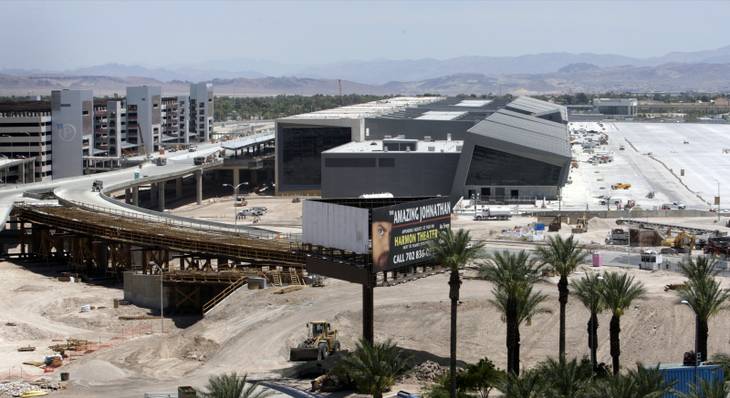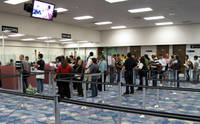VEGAS INC
When McCarran International Airport’s $2.4 billion Terminal 3 opens a year from now, Terminal 2, the eight-gate charter and international concourse north of the airport’s main facility, will be torn down.
Clark County Aviation Director Randall Walker said the facility that welcomed more than 2 million passengers in 2010, is no longer a functional terminal. “We’ve been keeping the place together with baling wire and bubble gum,” he said.
Airport officials have been mulling what to do with the terminal, which opened in 1986, once McCarran’s 14-gate Terminal 3 opens. The new facility will have expanded U.S. Customs and Border Protection facilities to process international arrivals faster. The airport will have the ability to accommodate two arriving flights at the same time, something that wasn’t possible at Terminal 2.
Terminal 3 will primarily serve international and domestic long-haul flights. The new terminal will have two floors of security checkpoints and an underground rail shuttle to McCarran’s D gates. When the terminal opens, Walker said, travelers would need to learn which terminal would provide the easiest access to their flights and where arriving passengers should be picked up.
The fate of Terminal 2 has always been a back-burner discussion.
The terminal has great airside access and the land abuts McCarran’s economy parking lot, making it extremely valuable. Knowing that Terminal 3 would soon open, airport officials invested little money in expansion or upkeep of the old building.
Walker said he’s assigning the airport’s long-range planners to rough out what the county could do with the land.
The county eventually could build another terminal building connected by rail shuttle to add more gates if the city gets back into a growth mode, he said. That could eliminate the need for a second airport in Ivanpah Valley, south of Las Vegas.
Walker said officials would complete the required environmental assessments and reports for Ivanpah, but shelve them until there’s a need for a second airport.
In 2007, 48 million passengers used McCarran, and airport officials worried about exceeding the estimated capacity of 53 million a year. With the need for a second airport evident, Clark County acquired 6,500 acres near Primm from the Bureau of Land Management and began work on an environmental-impact statement.
When the Great Recession hit, demand fell at the airport and the passenger count dropped to 39.8 million in 2010. Meanwhile, federal transportation officials began working toward a next-generation air traffic control system that would increase capacity in the sky enabling more flights per hour.
Adding gates at McCarran was penciled out as an option.
“I don’t think we would ever build Ivanpah if we have capacity at this airport,” Walker said. “It’s all in the master planning. We’re good at operating airports, and we’re also good at looking into the future and figuring out what it is we need to do if the community needs us to do it.”
When Terminal 2 comes down, the new building won’t change numbers. There will be Terminal 1 and Terminal 3, but no Terminal 2.
“I don’t think people will worry about that,” Walker said. “We don’t have any Gate 13s either.”

